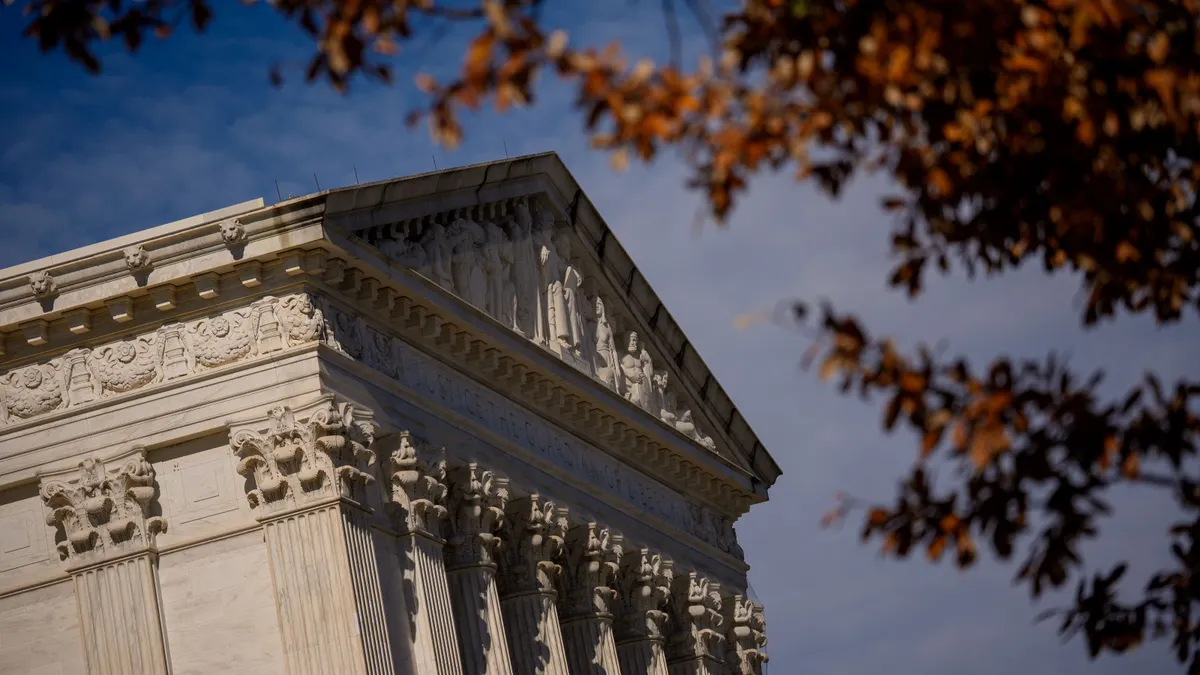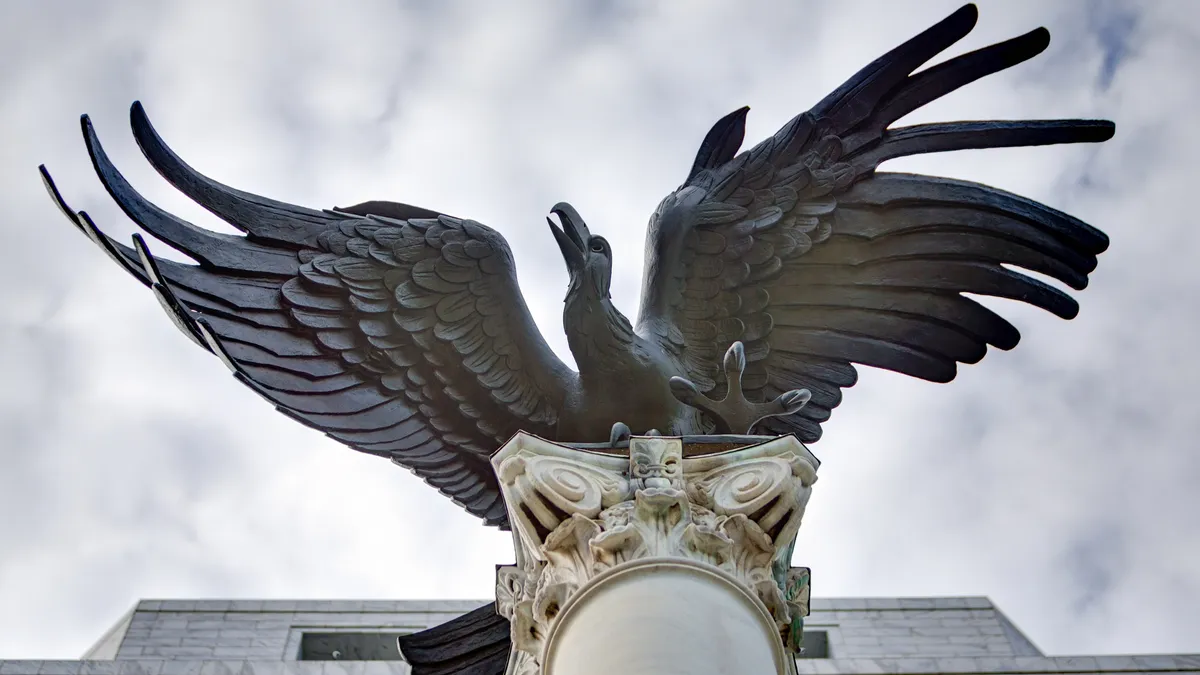The flare-up of an unforeseen “black swan” calamity is a bane of every CFO.
It’s also rare.
Yet in C-suites worldwide, a flock of such risks has come to roost this year as the Trump administration shakes up global trade, finance and post-World War II alliances.
The highest U.S. import duties since the 1930s risk stoking inflation and jumbling international supply chains. The whiplash from stop-start tariff announcements and Republican-backed legislation ballooning the federal debt have cast doubt on the dollar’s preeminence as a safe haven and reserve currency.
The White House includes on its to-do list the stuff of Hollywood fiction, such as the U.S. annexation of Canada, Greenland and the Panama Canal.
The upshot: Risks to CFO planning are bigger — and more frequent and inter-woven — than ever before, often spreading across global markets, according to Richard Chambers, senior advisor at AuditBoard, a provider of audit management software.
The shake-up in U.S. policy this year “is the next page in the chapter of perma-crisis that we’ve been living through since 2020” and the start of the pandemic, Chambers said in an interview.
“Foundational rules for risk management have been fundamentally altered forever,” according to Chambers, the former CEO of the Institute of Internal Auditors.
Before President Donald Trump took office in January, CFOs faced an array of severe risks that loomed outside direct federal control, including cyberattacks, climate change, the outbreak of a new pandemic or the spread of fighting in Ukraine and the Middle East.
This year many new hazards for CFOs stem from government policy shifts by a single decision maker — Trump.
“What is surprising is how quickly and how aggressively they’re all being implemented simultaneously,” Chambers said.
Federal Reserve Chair Jerome Powell has repeatedly said that proposed changes to U.S. trade, immigration, fiscal and regulatory policies create a degree of uncertainty that has stymied forecasters and prompted the central bank this year to forgo cutting borrowing costs.
In April, uncertainty over U.S. economic policy hit the highest level in four decades, surging nearly five times from just before the November national election until shortly after the “Liberation Day” announcement of tariffs on April 2, according to an index from the St. Louis Fed.
The index, which has declined with the easing of U.S.-China trade tensions, measures the frequency of news articles mentioning economic uncertainty and policy, and disagreement among forecasters over future inflation and government spending.
Many companies have taken a “wait-and-see” stance, postponing investments and hiring, New York Fed President John Williams recently said, echoing findings of the Conference Board and other surveys.
“We are truly getting to paralysis, and nothing goes well there,” Rimini Street CFO Michael Perica, said, referring to capital deployment decisions by top finance executives.
“We’re all driven to simply cut costs, hunker down,” Perica said in an interview, noting the need to preserve capital given the prospect of higher inflation and below-trend economic growth.
Yet delaying potentially profit-boosting investment poses its own set of risks. As the pace of innovation accelerates in artificial intelligence and other technologies, CFOs who wait for more clarity may fall behind their bolder, more nimble rivals, CFOs and risk management experts said.
“Just a couple of years back, for the first time we heard of ChatGPT, large language models, generative AI,” Tredence CFO Pratap Daruka said in an interview. “Now we’re talking about how agentic AI is changing the world.”
As in prior periods of upheaval, CFOs should draw up a range of scenarios and use them to stress test their planning, undergird business strategy and ensure they stay within their risk tolerance, the CFOs and risk management experts said. Such efforts will help them quickly respond to low-probability adversity.
Without such analysis, companies may suffer losses similar to those of the multinationals that abandoned operations in Russia after its 2022 invasion of Ukraine, they said.
While pursuing traditional scenario planning, CFOs can also curb perma-crisis risks by taking seven other steps:
1. Build resilience
Persistent shape-shifting in federal policymaking calls for flexible planning and nimble operations, the finance chiefs and risk management experts said.
Possible changes to “reciprocal” tariffs as soon as July 9 will require careful scenario planning for altering prices and prior consultation with suppliers and customers, they said.
CFOs can build resiliency by diversifying supply chains and shifting into markets that are least disrupted by tit-for-tat import duties, they said.
“There is a lot of geopolitical risk, so diversify that geopolitical risk,” Daruka said, noting that Tredence has expanded in the past five years to the U.K., Canada and the Middle East, and is scoping out other locations mindful of currency risk and taxation.
By expanding outside the U.S., a company also taps into a broader pool of talent, Perica said. “We are fortunate that we have an extensive global reach and there’s talent everywhere,” he said.
2. Sharpen the focus on external risks
The turbulence from Trump administration policy shifts underscores a lesson CFOs learned from the pandemic — the imperative to vet external risks outside their control rather than build business strategy based primarily on company data, according to Richard Wagner, field chief technology officer at Board International, a provider of business intelligence software.
“Before the pandemic I felt I was screaming underwater” when encouraging finance executives to look beyond revenue, costs and other internal gauges of performance, he said.
Early in the pandemic a maker of power tools that closely tracked consumer trends forecast a surge in home improvement and expanded production before its rivals, Wagner said. “That insight enabled them to capture millions in revenue, and gain higher profitability and market share.”
Also, a beverage maker, after identifying an 80% correlation between its sales and federal outlays for food stamps, can estimate the decline in demand triggered by Trump’s cuts to entitlement spending and plans for mass deportations, Wagner said.
At the same time, CFOs monitoring external events need to ensure they are not “blinded by the lightning” from an unexpected calamity, Chambers said.
Some companies struggling to adjust at the start of the pandemic failed to anticipate second- and third-order consequences such as higher inflation, a surge in federal spending and massive purchases of bonds by the Fed, he said.
“The dominoes continue to fall long after the initial impact” from upheaval, Chambers said.
3. ‘Nowcast’ as well as forecast
During the pandemic, many companies abandoned single-point annual planning for multi-point scenario planning updated monthly, Wagner said. “You are actually thinking about the quarter and the year on almost a daily basis.”
Reliable hard data such as gas prices, interest rates and consumer spending are especially useful, Wagner said. By updating monthly, a CFO can usually gain fresh insights without the risk of relying on less credible, shorter-term data, he said.
Even as CFOs today face the risk of acting on unseasoned data, they need to make bigger decisions with greater frequency than during less turbulent periods, Chambers said.
“The speed with which risks emerge and the volatility of those risks — how random and unpredictable they are — have all converged into perma-crisis,” Chambers said.
“We’re no longer in a position to look a year out, a month out, a week out, or even a day out — in some cases, we have to be prepared to move on a moment’s notice,” he said.
Since the start of the pandemic, Daruka and his colleagues have built multiple scenarios and set strategic targets on a monthly and quarterly basis. They track weekly data revenues, costs and eight other “business drivers.”
“It is becoming a more agile exercise,” he said, noting the whipsawing endured by Tredence customers from sudden changes in import levies and other policies.
“We are working with a lot of clients that will be significantly impacted from tariffs,” he said. The border taxes influence the “investments they are making in terms of cutting edge technologies and certain transformation projects.”
4. Harness artificial intelligence
Finance executives late to take advantage of the rapid insights from AI in scenario planning put themselves at a competitive disadvantage, the CFOs and risk management experts said.
Use of AI will become “just part of their job — just as much as closing the books,” honing forecasting and speeding adjustment to tariffs and other high-stakes challenges, Wagner said.
Deploying the technology is like fielding a team of economists and, by speeding up scenario planning, gives CFOs a fighting chance of keeping up with the accelerating pace of trade and other policy changes, he said.
Consumer packaged goods companies have made strides using AI to identify markets, determine the best price points, streamline supply chains and manage inventory, including when to buy and how to optimize delivery and use of warehouses, Daruka said.
Tredence uses AI and machine learning to identify patterns in revenue, geopolitical risk, client credit risk and the relation between employees skills and wages, he said.
5. Make scenario planning a company-wide project
A CFO should weave scenario planning throughout a company, acknowledging that different departments view risks differently, Wagner said.
Key players in scenario planning should include executives from finance, supply chain management, marketing, sales, logistics and other departments, he said.
The broad-based team should use a common integrated planning tool, ensuring they analyze the same data and model the various scenarios across their company’s entire income statement, Wagner said.
While building the scenarios, each member of the team will see how various versions of future events would require different shifts in their department’s strategy.
“There’s a lot of power in the collaboration,” Chambers said. “A CFO can play a really critical role in making sure that all the key players understand how they’re interconnected in the success of the enterprise.”
6. Flag the unknowns, with humility
Scenario planning and risk management arise from the principle that the future is unknowable. So a CFO, when communicating with audit committees and C-suite colleagues, should point out patches of fog across a company’s entire risk landscape, the finance executives and risk management experts said.
“CFOs, and I think everybody, needs to be much more comfortable in acknowledging what they don't know and what they can't see,” Chambers said.
As cyberrisks mounted during the past decade, many CFOs in discussions with their boards described cybersecurity tools with unwarranted confidence, he said.
“We do a disservice to boards if we give them any kind of false sense of security about how the future might unfold,” he said, adding “we learned that in my field very, very vividly in the past 10 years about cybersecurity.”
“If I’m a CFO today I’m going to try to lower the confidence level that everything is going to be OK,” he said. “You’ll get the attention of the board much faster if you communicate that way.”
7. Find opportunity in chaos
When campaigning for a second presidential term, Trump promised big shifts in finance, trade, regulation, taxation, immigration and foreign policy. Volatility in the dollar and stock markets, along with public demonstrations, underscore the extent of his policy changes.
Under Trump, looser federal regulation in finance, labor law and environmental protection may make a company more — or less — competitive, and reduce operating and compliance costs.
“In any seismic, risk-induced disruption there is almost inevitably going to be winners and losers,” Chambers said. “Risk is one side of the coin, opportunity is the other side.”
Changes to tariffs, taxation and fiscal policy provide an opening for Tredence, as many companies seek to adjust to uncertainty by cutting costs and taking a “wait-and-watch” approach to investment and expansion plans, Daruka said.
“A cost-take-out opportunity for the client is also a revenue opportunity for me,” he said, “so I can build the right type of solution for the client to help them with profitability and reducing costs.”
Identifying potential payoffs from disruption is a CFO imperative, Daruka said.
“Scenario planning for me as a CFO is not just a cost activity or not just a margin activity, it is equally a growth opportunity,” he said.






















